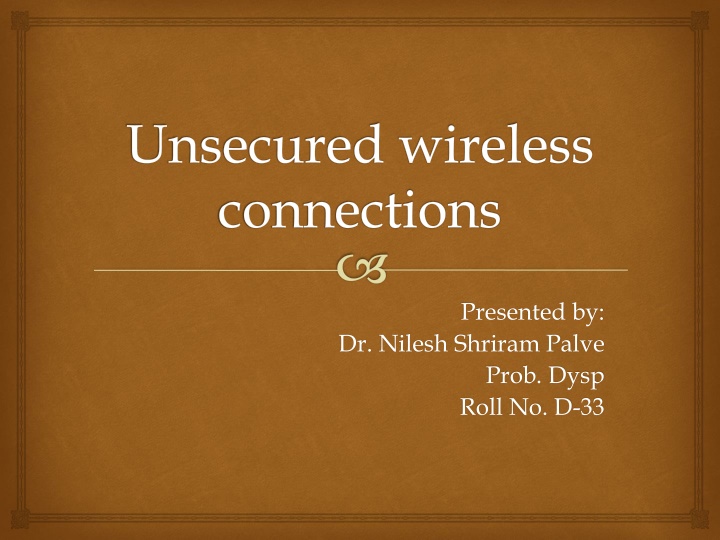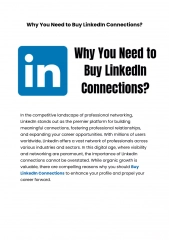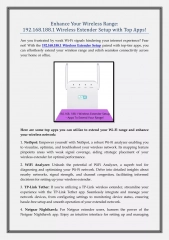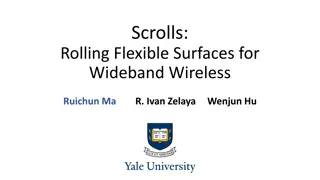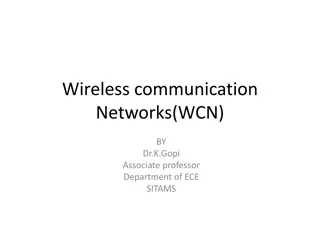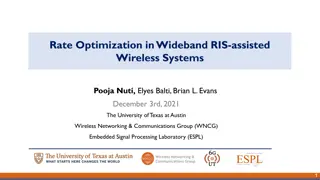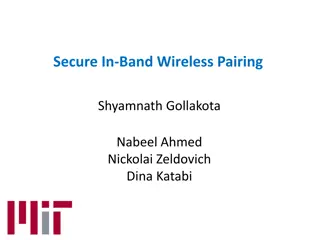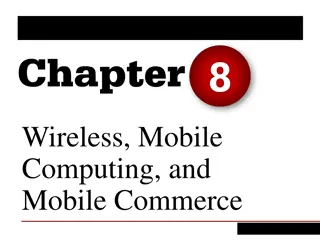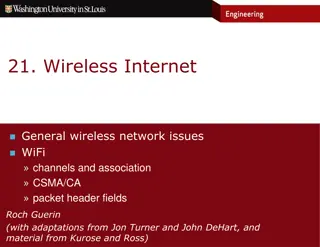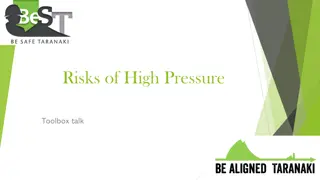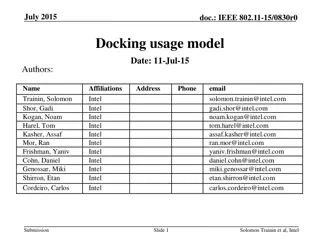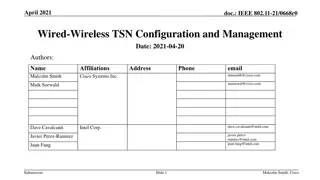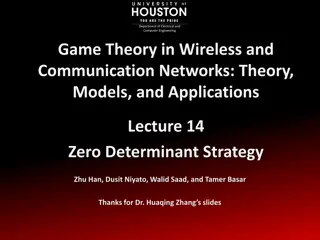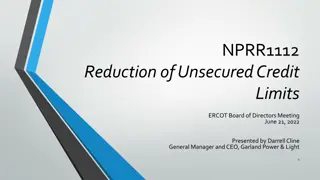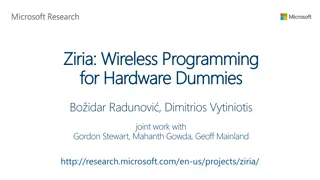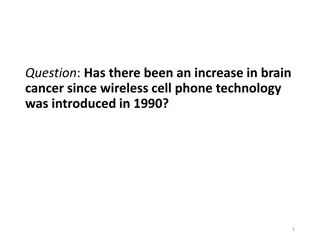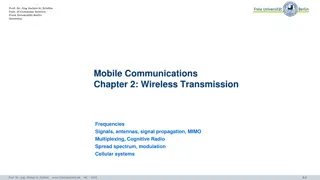Risks of Unsecured Wireless Connections
Wireless connections are considered secured when users input a password following WPA or WPA2 standards. Unsecured connections lack encryption, leading to data interception, eavesdropping, and distribution of malware. Threats include data theft, cyber crimes, and misuse for illegal activities. Protective measures involve using VPN services, avoiding financial transactions on unsecured networks, disabling file sharing, and creating strong, unique passwords.
Download Presentation

Please find below an Image/Link to download the presentation.
The content on the website is provided AS IS for your information and personal use only. It may not be sold, licensed, or shared on other websites without obtaining consent from the author.If you encounter any issues during the download, it is possible that the publisher has removed the file from their server.
You are allowed to download the files provided on this website for personal or commercial use, subject to the condition that they are used lawfully. All files are the property of their respective owners.
The content on the website is provided AS IS for your information and personal use only. It may not be sold, licensed, or shared on other websites without obtaining consent from the author.
E N D
Presentation Transcript
Unsecured wireless connections Presented by: Dr. Nilesh Shriram Palve Prob. Dysp Roll No. D-33
What are they? Wireless connections are considered to be secured if access to them requires users to input a password that conforms to the WPA or WPA2 standards for security codes. Networks become unsecured due to the absence of strong password validation procedures and encrypted data connections. So they allow the movement of data across their airwaves without any form of encryption or security protection.
Threats posed due to them Internet hackers nearby can eavesdrop on one s connection to gather useful information from his/her activities. Interception, modification, and theft of data and sensitive information can occur. Enables cyber-criminals to quite easily distribute malicious software such as malware and viruses.
Threats continued The use of a network for the transmission of hate speech, illicit materials such as child pornography, or the movement of stolen documents and intellectual property etc. Cyber crimes like online stalking, identity theft, online defamation, email bombing, harassment are more likely in an unsecured public network
Protective measures Using a Virtual Private Network (VPN) service, imposes strong encryption on all data moving to and from your device during each session. While accessing free, unsecured Wi-Fi hotspots, avoid accessing sites where you have to login or give away your financial information, such as social sites, email accounts, online bank accounts, online stores, etc. If you should login, then prefer websites with an https address. If you have to carry out an urgent online banking transaction, always prefer a secure Wi-Fi network even if you have to pay for it.
Protective measures continued Disable file sharing on your computer. This minimizes the risk of an attacker to barge into the personal data on your machine. Create strong passwords avoid using dictionary words, your name, birth date or pet s name. Use uppercase letters, special characters, meaningless words or phrases. Use different passwords for every online account. Ensure that your computer s antivirus or phone s mobile security app is up-to-date, and so are its operating system, software, and Internet browsers.
